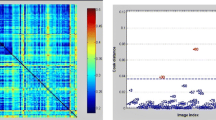Abstract
Semi-quantitative values are useful for interpreting molecular images in neurodegenerative diseases. For handling semi-quantitative images, the use of statistical parametric mapping (SPM) or three-dimensional stereotactic surface projections (3D-SSP) is widespread. These methods are used by converting individual brains into stereotactic brain coordinates through anatomical standardization, and then voxel-based statistical analysis of molecular images is performed in clinical practice as an aid to diagnostic interpretation. SPM performs realignment, co-registration, anatomical normalization, and smoothing, followed by statistical analysis. 3D-SSP creates a brain surface image after anatomical standardization using the mutual information, then brain surface images of each individual are statistically analyzed with the database to create a z-score map. This z-score map is used to aid in interpreting individual images for diagnosis.
For molecular images including FDG-PET images, amyloid PET images, and tau PET images, the standardized uptake value ratio (SUVR) images may be used as an interpretation aid. The SUVR is calculated as the ratio of cortical-to-cerebellar counts. There is a good correlation between SUVR and visual interpretations concerning amyloid PET images. Because the SUVRs of amyloid PET images differ for each tracer, and there have been attempts to standardize them, the Centiloid Project (CL) is proposed and the SUVR of each amyloid PET tracer is converted to CL.
The semi-quantitative images and voxel-based statistical analysis methods are very useful tools in molecular imaging research and clinical interpretation of molecular images of neurodegenerative disease.
Access this chapter
Tax calculation will be finalised at checkout
Purchases are for personal use only
Similar content being viewed by others
References
Friston KJ, Frith CD, Liddle PF, Frackowiak RS. Comparing functional (PET) images: the assessment of significant change. J Cereb Blood Flow Metab. 1991;11:690–9.
Ashburner J, Friston KJ. Voxel-based morphometry—the methods. NeuroImage. 2000;11:805–21.
Minoshima S, Koeppe RA, Frey KA, Ishihara M, Kuhl DE. Stereotactic PET atlas of the human brain: aid for visual interpretation of functional brain images. J Nucl Med. 1994;35:949–54.
Minoshima S, Frey KA, Koeppe RA, Foster NL, Kuhl DE. A diagnostic approach in Alzheimer's disease using three-dimensional stereotactic surface projections of fluorine-18-FDG PET. J Nucl Med. 1995;36:1238–48.
Matsuda H, Mizumura S, Nagao T, et al. An easy Z-score imaging system for discrimination between very early Alzheimer's disease and controls using brain perfusion SPECT in a multicentre study. Nucl Med Commun. 2007;28:199–205.
Ishii K, Kono AK, Sasaki H, et al. Fully automatic diagnostic system for early- and late-onset mild Alzheimer's disease using FDG PET and 3D-SSP. Eur J Nucl Med Mol Imaging. 2006;33:575–83.
Kono AK, Ishii K, Sofue K, Miyamoto N, Sakamoto S, Mori E. Fully automatic differential diagnosis system for dementia with Lewy bodies and Alzheimer's disease using FDG-PET and 3D-SSP. Eur J Nucl Med Mol Imaging. 2007;34:1490–7.
Ishii K, Ito K, Nakanishi A, Kitamura S, Terashima A. Computer-assisted system for diagnosing degenerative dementia using cerebral blood flow SPECT and 3D-SSP: a multicenter study. Jpn J Radiol. 2014;32:383–90.
Herholz K, Salmon E, Perani D, et al. Discrimination between Alzheimer dementia and controls by automated analysis of multicenter FDG PET. NeuroImage. 2002;17:302–16.
Brugnolo A, De Carli F, Pagani M, et al. Head-to-head comparison among semi-quantification tools of brain FDG-PET to aid the diagnosis of prodromal Alzheimer's disease. J Alzheimers Dis. 2019;68:383–94.
Ding Y, Sohn JH, Kawczynski MG, et al. A deep learning model to predict a diagnosis of Alzheimer disease by using (18)F-FDG PET of the brain. Radiology. 2019;290:456–64.
Kim S, Lee P, Oh KT, et al. Deep learning-based amyloid PET positivity classification model in the Alzheimer's disease continuum by using 2-[(18)F]FDG PET. EJNMMI Res. 2021;11:56.
Yamane T, Ishii K, Sakata M, et al. Inter-rater variability of visual interpretation and comparison with quantitative evaluation of (11)C-PiB PET amyloid images of the Japanese Alzheimer's disease neuroimaging initiative (J-ADNI) multicenter study. Eur J Nucl Med Mol Imaging. 2017;44:850–7.
Akamatsu G, Ikari Y, Ohnishi A, et al. Automated PET-only quantification of amyloid deposition with adaptive template and empirically pre-defined ROI. Phys Med Biol. 2016;61:5768–80.
Ishii K, Yamada T, Hanaoka K, et al. Regional gray matter-dedicated SUVR with 3D-MRI detects positive amyloid deposits in equivocal amyloid PET images. Ann Nucl Med. 2020;34:856–63.
Klunk WE, Koeppe RA, Price JC, et al. The centiloid project: standardizing quantitative amyloid plaque estimation by PET. Alzheimers Dement. 2015;11(1–15):e11–4.
Matsuda H, Yamao T. Software development for quantitative analysis of brain amyloid PET. Brain Behav. 2022;12:e2499.
Author information
Authors and Affiliations
Corresponding author
Editor information
Editors and Affiliations
Rights and permissions
Copyright information
© 2023 The Author(s), under exclusive license to Springer Nature Switzerland AG
About this chapter
Cite this chapter
Ishii, K. (2023). Semi-Quantitative Analysis: Software-Based Imaging Interpretation: NEUROSTAT/SPM. In: Cross, D.J., Mosci, K., Minoshima, S. (eds) Molecular Imaging of Neurodegenerative Disorders. Springer, Cham. https://doi.org/10.1007/978-3-031-35098-6_13
Download citation
DOI: https://doi.org/10.1007/978-3-031-35098-6_13
Published:
Publisher Name: Springer, Cham
Print ISBN: 978-3-031-35097-9
Online ISBN: 978-3-031-35098-6
eBook Packages: MedicineMedicine (R0)




